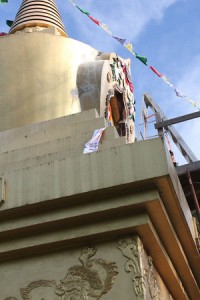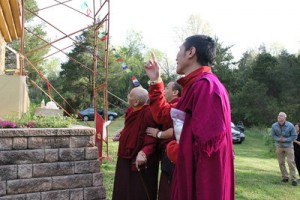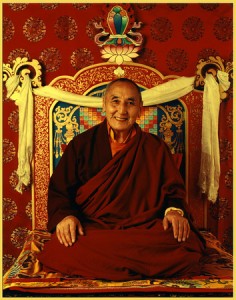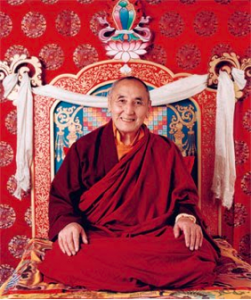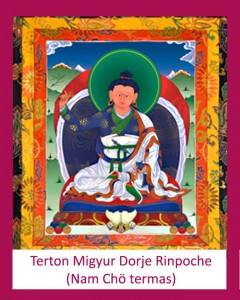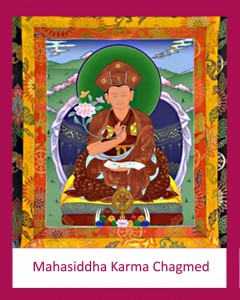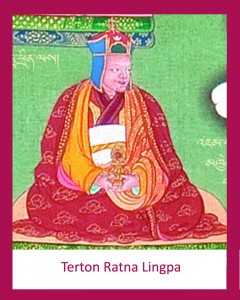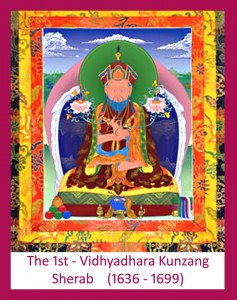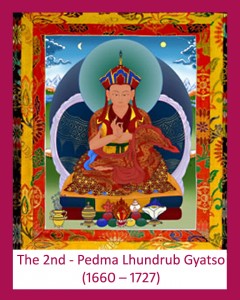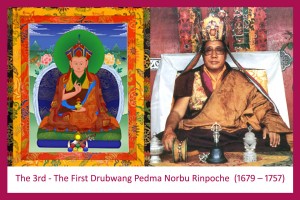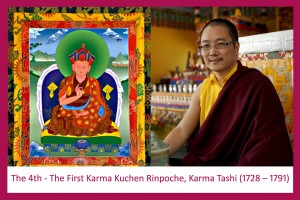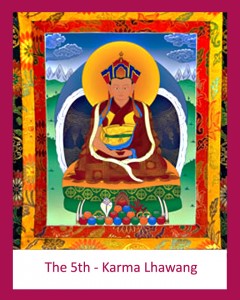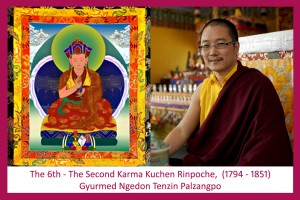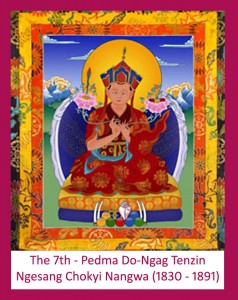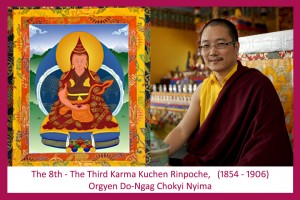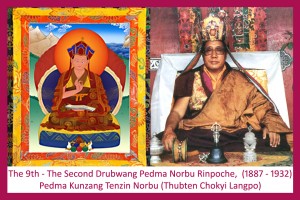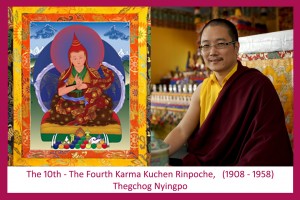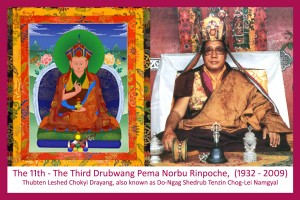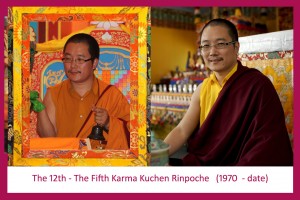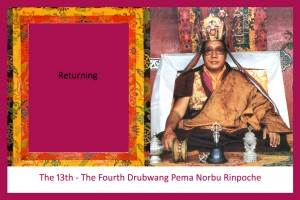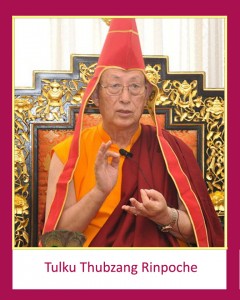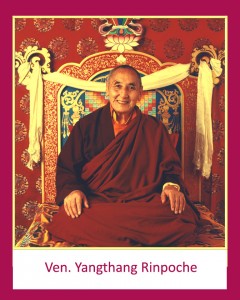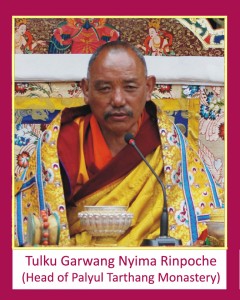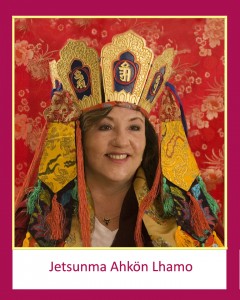The following is a story submitted by a student of Jetsunma Ahkon Lhamo, John Pelletier expressing his experience with Ven. Yangthang Tulku Rinpoche on Thursday April 25th:
I want to share with you something very special that happened this past Thursday morning. As Rinpoche was getting ready to leave for New York, he spontaneously asked to visit our stupas, both the Enlightenment Stupa in the parking lot and the various stupas in the peace park.
As many of you already know, we have had numerous obstacles keeping full access to the stupas on the land across the street due to various seemingly external causes, such as floods and storms taking out bridges and making roads impassable.
We have had difficulty maintaining the stupas, and, as a matter of fact, we all know that we had allowed many to just fall into disrepair. Even after a great effort this past summer, some of the repairs have come to a standstill, again, because of seemingly external causes like the weather or lack of personnel.
Needless to say, this is distressing not only to Jetsunma, but to any being with the clarity to see reality as it is – anyone who can see the true internal reflection of what the external obstacle really is.
I didn’t witness the visit to the Enlightenment Stupa, but something very magical happened at the Migyur Dorje Stupa that is worth sharing. It’s hard to explain in words the profundity of what happened there Thursday morning, so I’ll just say what happened so you can contemplate this remarkable blessing that Rinpoche’s visit brought to us.
Rinpoche performed a blessing ceremony at the Migyur Dorje Stupa that included many prayers and mandala offerings, represented by the throwing of blessed rice in the traditional manner we have seen many times before, and circumabulations. Jetsunma later told us that he was praying to purify and apologize for the negativity caused by allowing the stupas, and the land in general, to have arrived at such a state.
The whole ceremony was very impromptu yet incredibly graceful and beautiful. At the end, to seal the blessing, a khatag was thrown into the air. I have never seen anything quite like this before in my life and this is the part, truly, that I wanted to share with everyone.
I would imagine that if you or I threw a khatag into the air at the Stupa, it may just kind of look like it was being thrown and ultimately land somewhere pretty low, maybe where the level where offerings are generally made. This wasn’t the case here at all.
What we saw was the khatag literally unfurling and taking flight through the air, waving as if it had wings, approaching and landing perfectly on the harmika, the square structure that rests under the spire. It was as if the Stupa itself had bent over to receive the khatag from Rinpoche.
As it landed, the air was still and everyone, including Rinpoche and his entourage, audibly gasped and rejoiced. This was indeed an uncommon event even for those who have seen this type of thing many times, again and again. My heart is filled with joy and my eyes filled with tears to relate the rarity of this type of purity in the world.
May we never forget the Buddhafield this land truly is and the inconceivably rare blessings it holds. May we do nothing but share and uphold this gift from our precious Guru, Jetsunma, and may we achieve the result of understanding the nature of the precious jewels we have in our midst. May we never let this blessing be forgotten. May none of these efforts be wasted.
